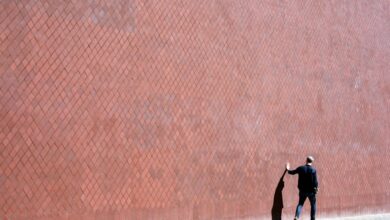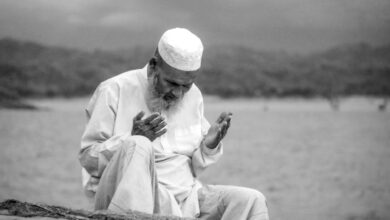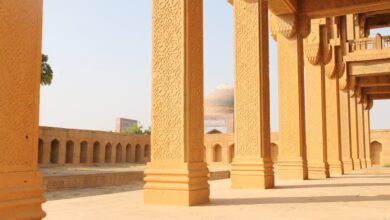The Enduring Enigma of Rapa Nui’s Stone Giants

Easter Island. The very name conjures images of windswept landscapes, ancient secrets, and colossal stone figures staring out at the vast Pacific. For centuries, the island’s iconic Moai statues have stood as silent sentinels, an enduring testament to the ingenuity and mystery of the Rapanui people. But how did these multi-ton monoliths, some towering over 30 feet and weighing upwards of 80 tons, travel from the volcanic quarry where they were carved to their final resting places across the island? It’s a question that has baffled archaeologists and captivated curious minds for generations.
For a long time, the dominant theories involved a monumental effort of rolling the statues on logs or dragging them on sleds. These methods, while plausible, presented significant logistical challenges and felt, well, a bit clunky for a civilization capable of such exquisite craftsmanship. Now, compelling evidence and groundbreaking experimental archaeology suggest a far more elegant, and perhaps even poetic, solution: the Moai statues may have literally “walked” themselves into position. An archaeological mystery, it seems, is getting one step closer to being solved.
The Enduring Enigma of Rapa Nui’s Stone Giants
Imagine standing before one of these impressive figures. Their sheer scale is breathtaking. Carved primarily from the tuff (a type of volcanic ash) of the Rano Raraku quarry, these statues were not merely decorative. They were likely ancestors, embodying spiritual power and connecting the Rapanui people to their heritage and gods. Moving them was not just a feat of engineering; it was a deeply significant act of cultural and religious devotion.
The logistics alone were staggering. The quarry, a veritable Moai factory, still holds hundreds of unfinished statues embedded in its slopes. Those that were completed had to be transported across often rugged terrain, sometimes miles from their origin point, to be erected on ceremonial platforms called ahu. Previous theories, while attempting to explain the movement, often struggled with the sheer physics of it, not to mention the lack of readily available large trees for rollers on an island that had long been deforested by the time Europeans arrived.
A Landscape of Silent Witnesses
Walking across Easter Island, you encounter Moai in various states and locations. Some stand proudly on their ahu, backs to the sea, gazing inland. Others lie toppled, victims of inter-tribal conflict or the ravages of time. And then there are those, particularly along ancient roads, that appear to have been abandoned mid-journey, lying face down or on their backs, almost as if they were suddenly interrupted in their procession. These abandoned statues, often found with damage consistent with a fall, provide crucial clues about how they were moved.
The “Walking” Moai Theory Takes Center Stage
The idea that the Moai walked isn’t entirely new, but it has gained significant traction and scientific backing thanks to researchers like Carl Lipo and Terry Hunt. Their theory posits that the statues were moved upright, leveraging their unique shape and center of gravity in a rocking, side-to-side motion, much like a refrigerator being “walked” into a new position. Think about it: a refrigerator is heavy and cumbersome, but with a bit of tilting and shifting, you can inch it along without ever lifting it off the ground.
This method drastically reduces the friction and power required compared to dragging. It also explains why so many statues were abandoned along the ancient roads. If a statue began to tilt too much, or if one of the ropes snapped, it would easily topple, often breaking its neck or nose – common injuries found on the fallen Moai. This isn’t evidence of clumsy movers; it’s evidence of a sophisticated, albeit precarious, method of transport.
Evidence from the Stones Themselves
What makes this theory so compelling is how well it aligns with the statues’ design. Many of the Moai, particularly those found in transit, have a distinctive D-shaped or rounded base, which would allow them to pivot and rock. Their bellies are often slightly distended, giving them a forward-leaning posture. This isn’t just an artistic choice; it’s a structural advantage, making them inherently stable when standing upright, but also allowing for controlled tilting and rocking.
Furthermore, the ancient roads themselves lend credence to this theory. They aren’t perfectly smooth, but often show subtle concave depressions. These depressions, sometimes interpreted as ruts from rolling, could actually be the result of heavy Moai rocking back and forth, slowly indenting the ground beneath them over repeated journeys. The very landscape, it seems, held the secrets to its past.
Recreating History: The Experimental Archaeology
The real turning point for the “walking” Moai theory came not from conjecture, but from direct experimentation. In 2012, Lipo and Hunt, working with a team of students and local Rapanui islanders, conducted an extraordinary experiment. They took a 10-foot tall, 5-ton replica Moai and, using just three ropes and a small team of about 18 people, managed to “walk” it a significant distance. Two ropes were tied to the top, one on each side, while a third was tied to the back of the head/neck area.
By alternately pulling the side ropes, the statue rocked from side to side, inching forward with each sway. The third rope at the back helped stabilize it and provided a slight forward impetus. The results were stunningly effective. The statue moved with surprising ease and speed, demonstrating that this method was not only possible but highly efficient. It completely debunked the notion that such feats required hundreds of people and impossible amounts of brute force.
Lessons from the Past, Insights for the Future
This experiment wasn’t just a clever stunt; it was a profound insight into Polynesian ingenuity. It revealed that the Rapanui people weren’t just skilled carvers, but also brilliant engineers and problem-solvers. They understood the physics of their materials and the mechanics of movement, leveraging the natural design of their creations to achieve what outsiders once deemed impossible. It forces us to reconsider the narrative of ancient peoples as less advanced and instead see them as sophisticated, innovative societies with deep knowledge of their environment and resources.
Beyond the Movement: Implications and Cultural Significance
Understanding *how* the Moai moved also sheds light on the *why*. The colossal effort involved in carving, transporting, and erecting these statues speaks volumes about the societal structure, leadership, and spiritual beliefs of the Rapanui. It points to a highly organized society capable of coordinating massive communal projects, likely driven by a shared reverence for ancestors and a desire to connect with the divine.
The “walking” theory, by making the process seem more manageable and less resource-intensive than previously thought, actually elevates our appreciation for the Rapanui. It transforms them from a culture reliant on sheer, overwhelming force to one characterized by elegant, intelligent solutions. It paints a picture of a people in harmony with their environment and their creations, making the impossible seem, well, almost natural.
An Unveiling of Ingenuity and Endurance
The mystery of how the Easter Island Moai statues moved has long been one of archaeology’s most captivating puzzles. The prevailing “walking” theory, backed by solid evidence from the statues themselves and brilliant experimental archaeology, offers a compelling and elegant solution. It reminds us that ancient civilizations were far from primitive; they possessed a deep understanding of physics, engineering, and human collaboration. The Rapanui’s ingenuity allowed them to imbue their sacred landscape with these monumental figures, a testament to their enduring spirit and remarkable capabilities.
As we continue to unravel the secrets of Rapa Nui, we gain not just historical facts, but a deeper appreciation for the boundless creativity and resilience of humanity. The Moai, once silent question marks on a distant island, now speak volumes about the human capacity to achieve the extraordinary, one careful, rocking step at a time.





